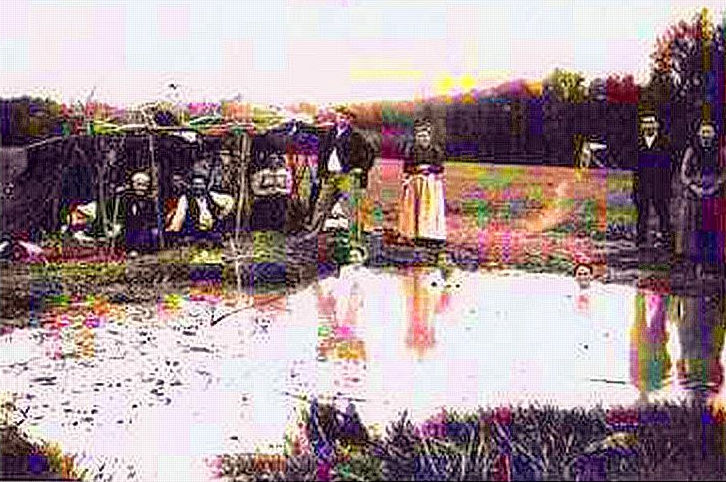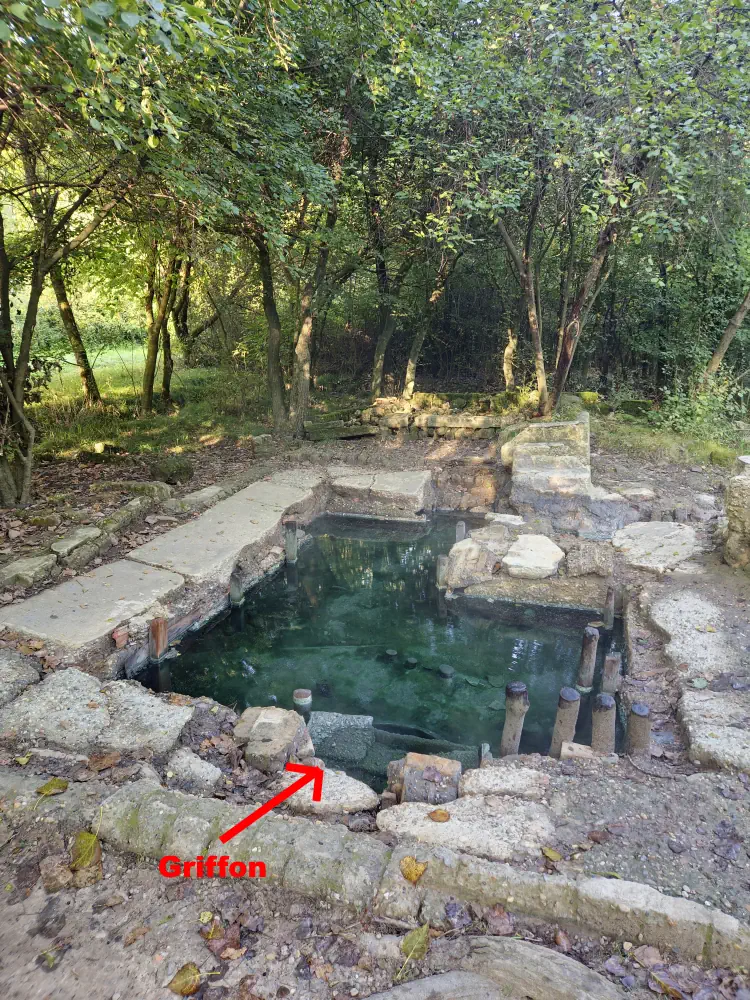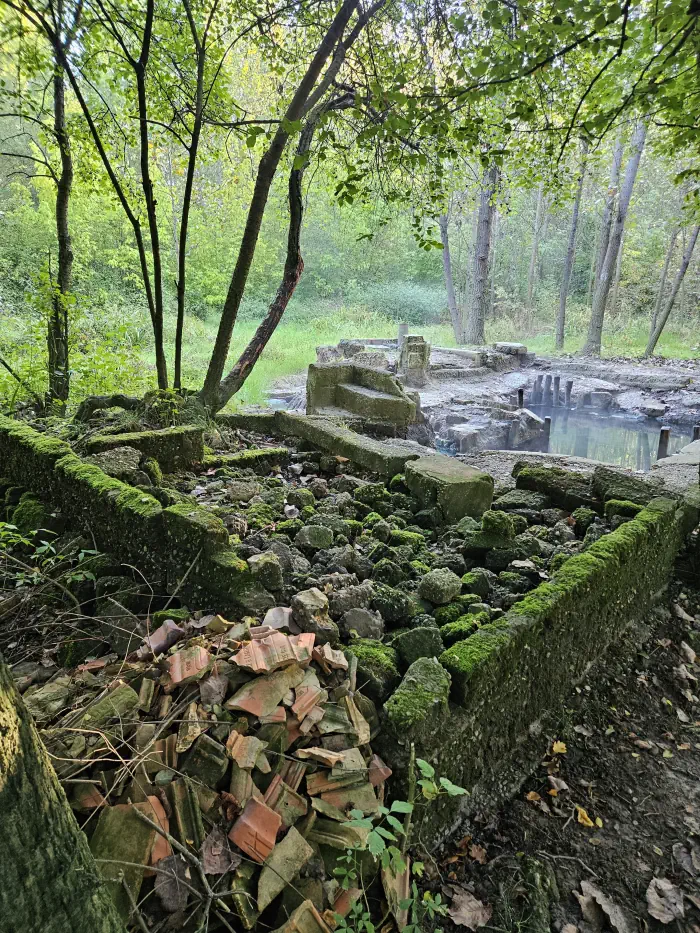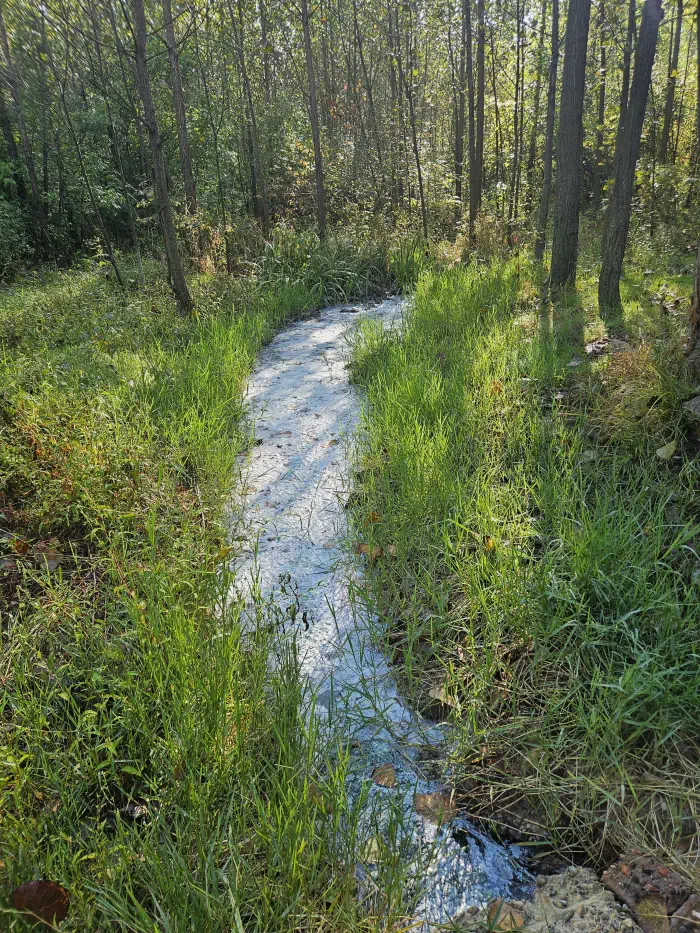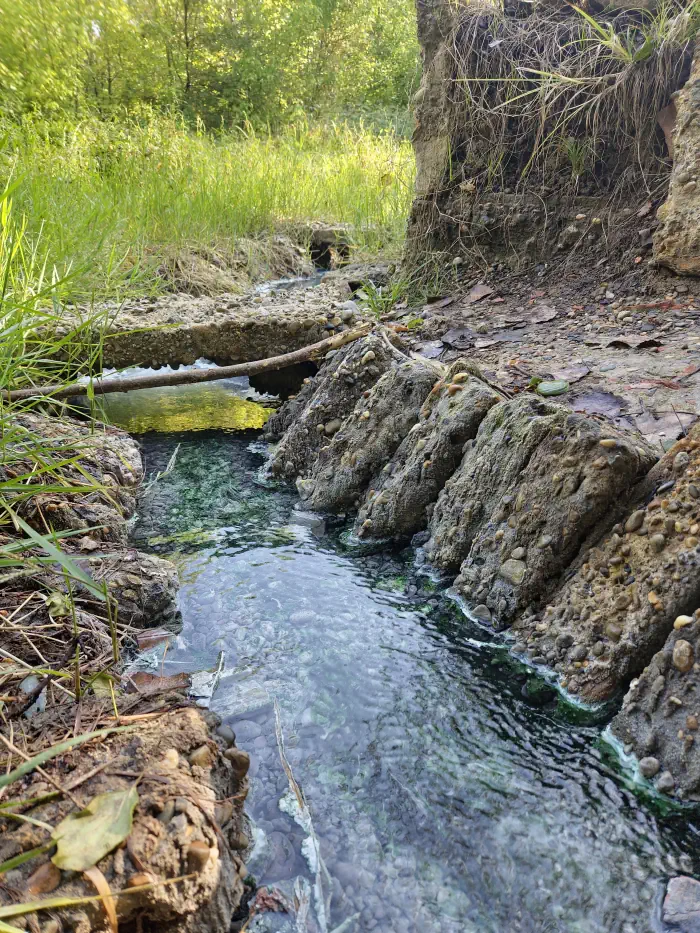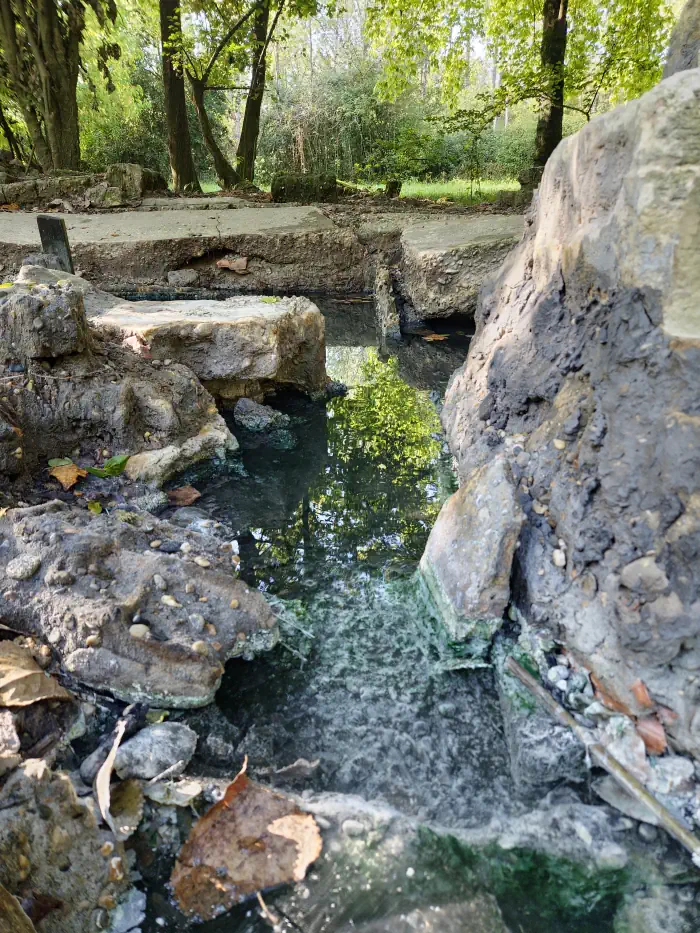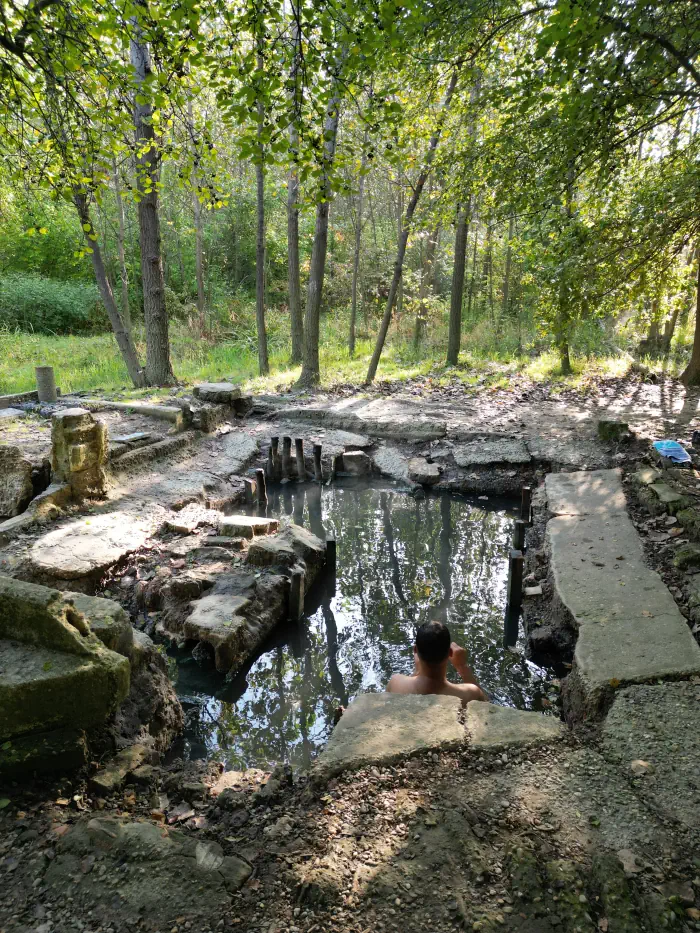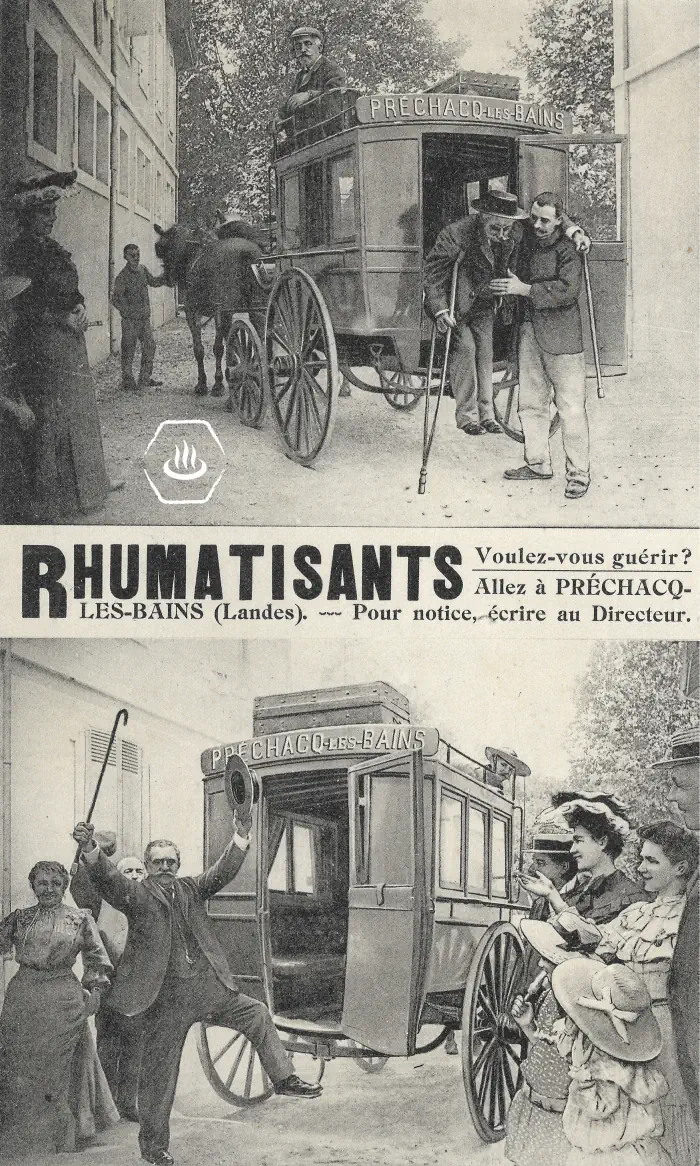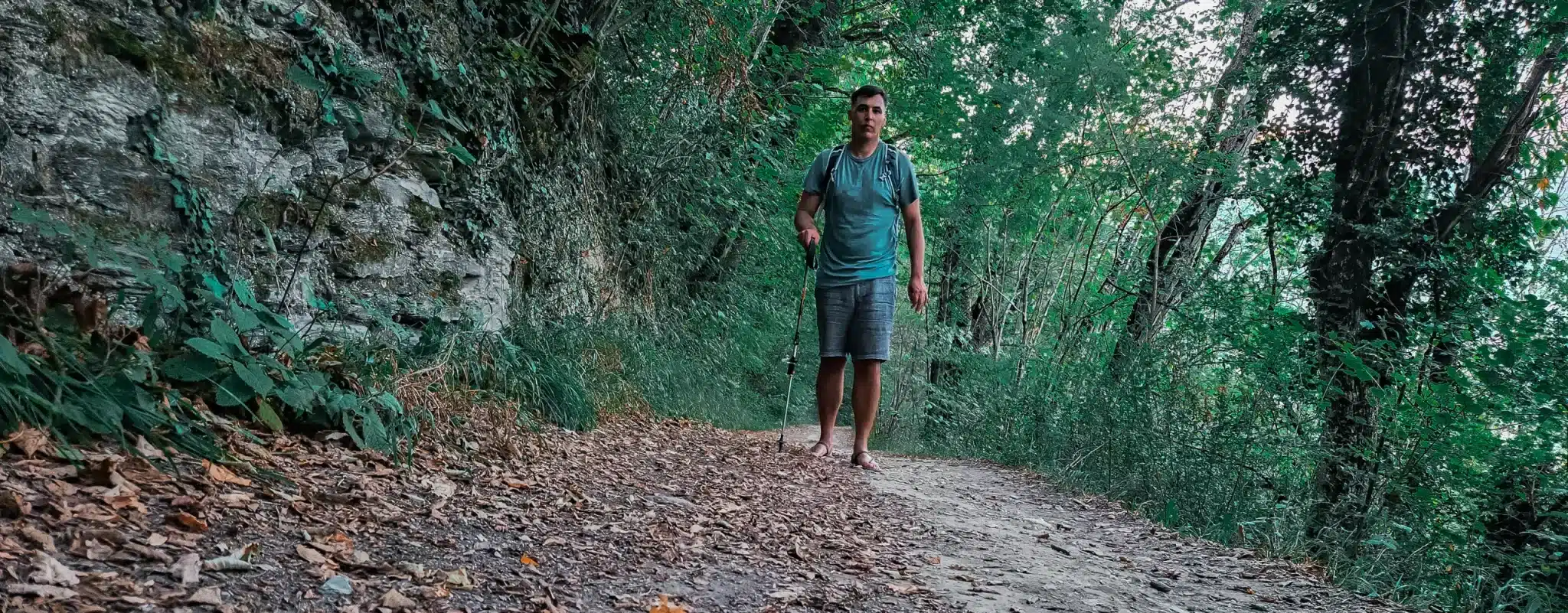Le Trou de Madame in Préchacq-les-Bains to visit in the Landes
- Nature Source Chaude
- Published on
- Updated on 22 July 2025
A hot spring gushes out in the heart of the Sesca meadow, near the banks of the Adour and about a kilometre from the thermal baths at Préchacq-les-Bains in the Landes department.
This spring, known as ‘Le Trou de Madame’, is an ideal place for hot bath lovers to take a stroll, as well as for curious people wanting to discover this secluded spot. I was immediately attracted to the qualities of the spring.
Table of Contents
A peaceful, accessible place to visit
How do you get to the spring?
The Trou de Madame route starts at the Clos Pité car park on Avenue des Sources, opposite the eponymous hotel-restaurant. Follow the fairly wide forest road for around 1.2 kilometres, then take the footpath for approximately 150 metres.
You can access the site free of charge.
Owner of the spring: the thermal baths of Préchacq-les-Bains since 1998.
At the start of the route, which mostly follows a wide forest track, you will find a picnic bench and the first signpost. You can admire a beautiful poplar grove. These trees are tall, slender poplars and large oaks. The forest is pleasant but not very extensive.
You will soon recognise a damp, muddy path that you need to follow. There is a sign on site indicating this route. As you walk along it, you will notice a smell of rotten eggs, indicating the presence of hydrogen sulphide. The smell will become stronger the further you go. This smell comes from a stream, meaning the spa site is nearby. This creates a very picturesque effect.
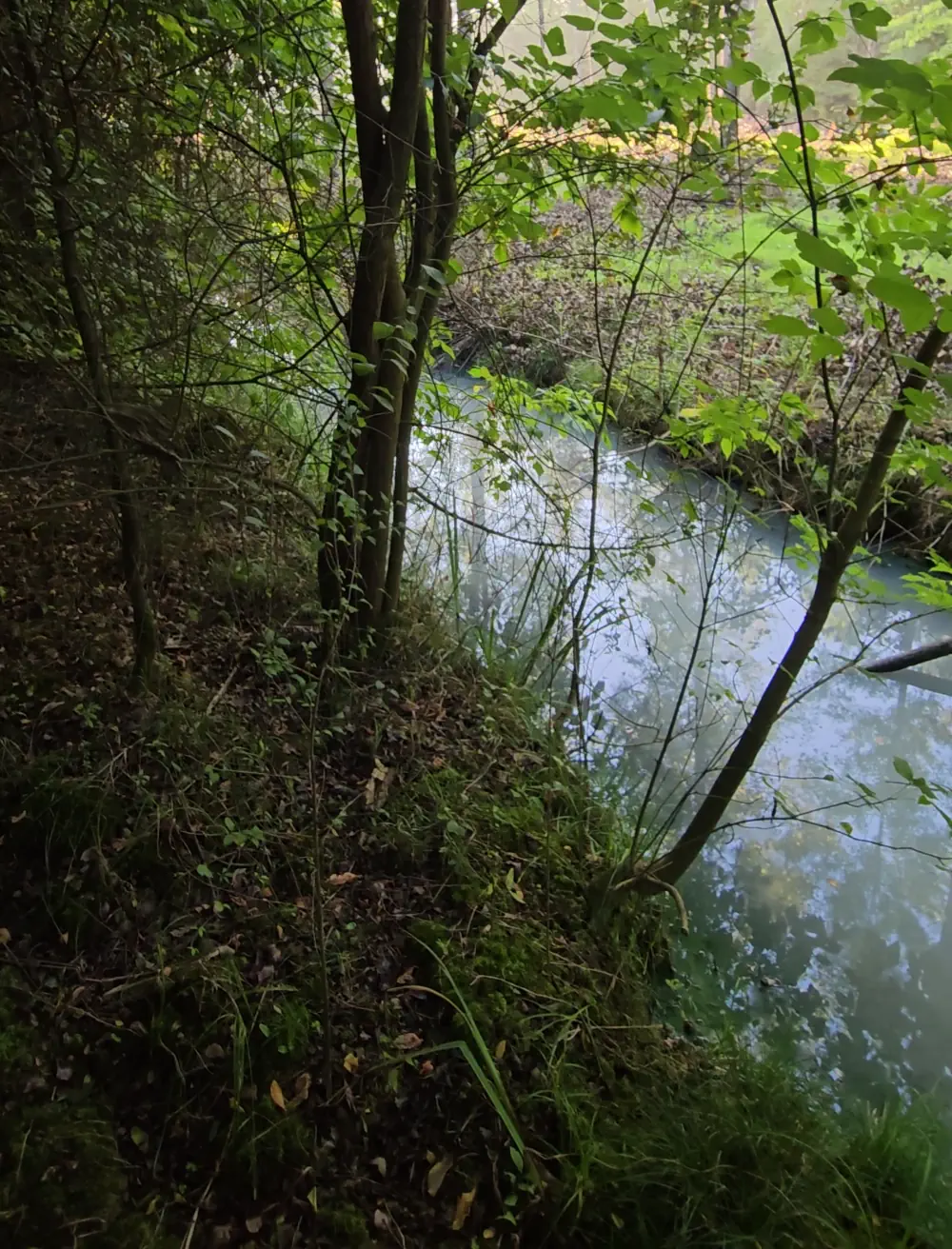
Continue your walk and you will reach a more open area containing a small wooden bridge. Once you have crossed this bridge, which is located in the middle of the meadow, you will be able to take a closer look at the Trou de Madame site (madam’s hole).
So this site probably has the most appropriate name. In the past, it was just a thermal water hole mixed with mud. It was mainly used by women.
Today, the site is marred by remains. However, there is almost nothing to criticise about this remarkably powerful spring, which provides relief from various aches and pains. The best way to experience it is to take a dip.
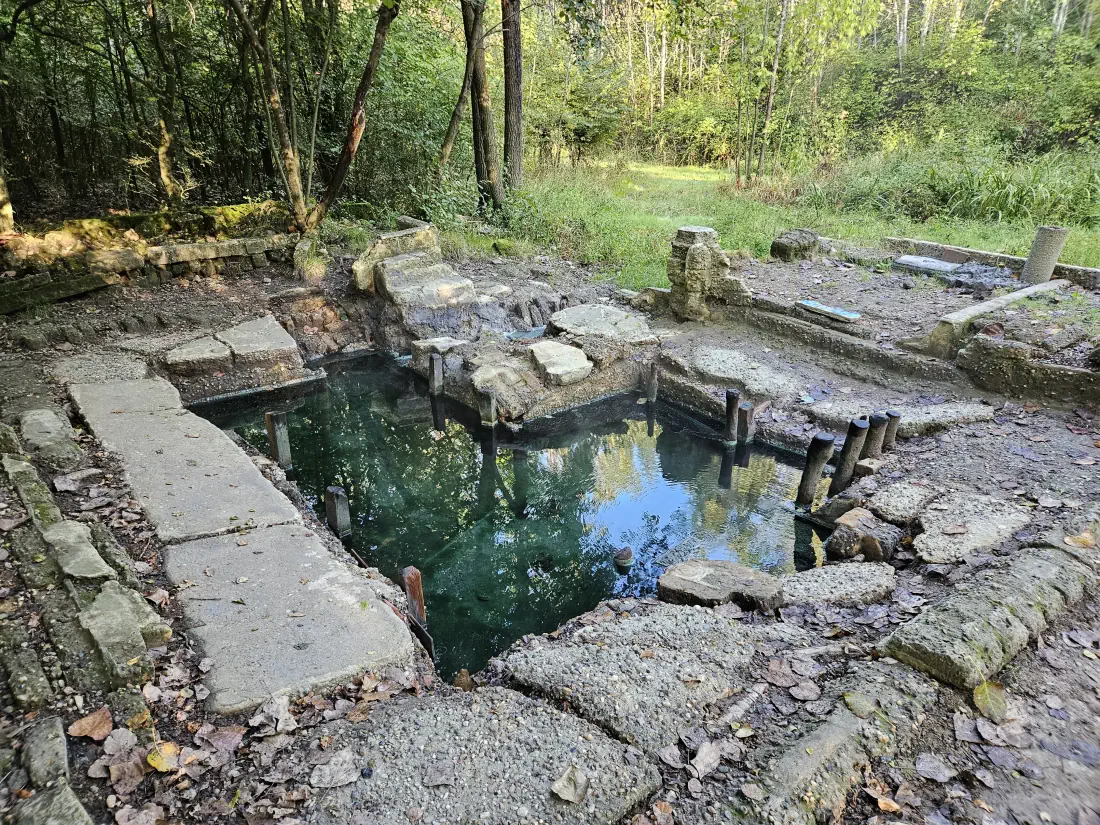
As these waters are tepid and lose their effectiveness when transported, it is important to soak in them where they flow.
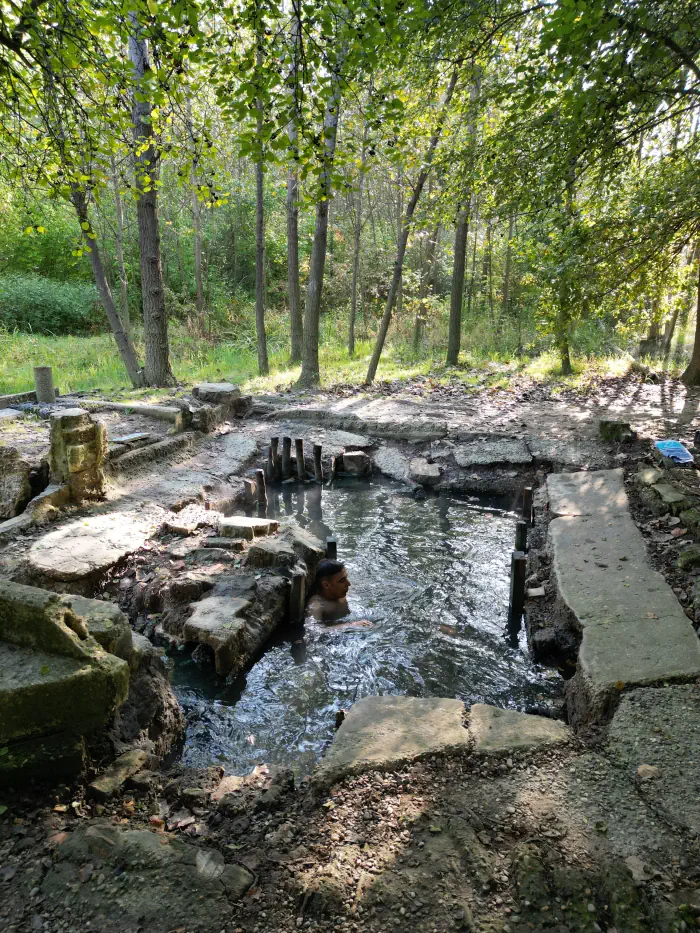
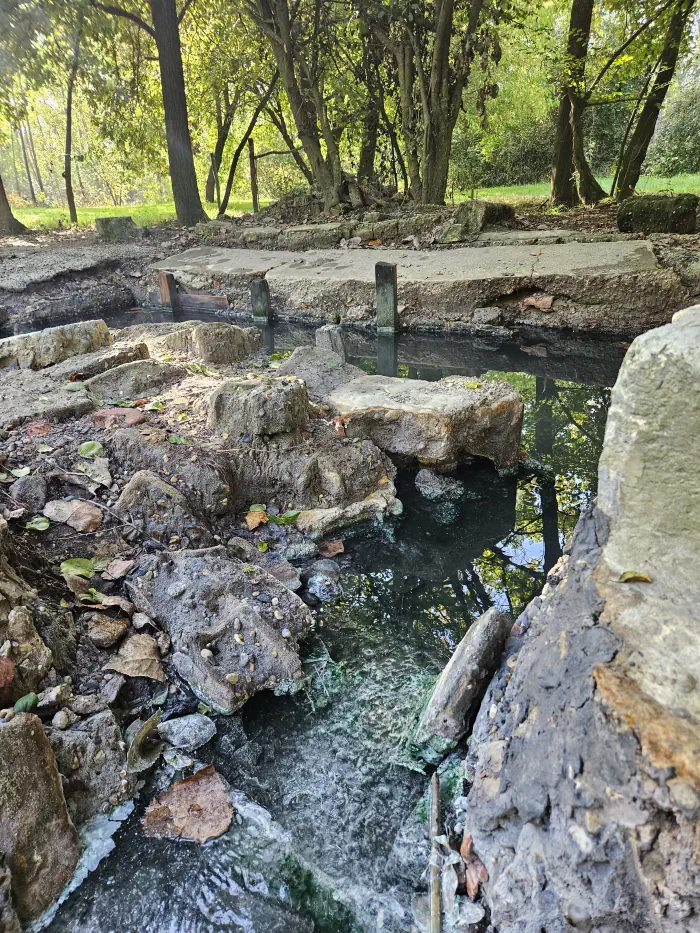
A little bit of the history
Originally, these waters flowed into a simple hole where they mixed with sulphurous mud. This is how they were used until the end of the nineteenth century (see the photograph taken in 1892).
However, most springs in France were captured and housed under buildings in the 19th century, when spa activity was highly profitable. Catchment was an almost compulsory prerequisite for guaranteeing the purity of the water and obtaining authorisation from the authorities to use it. At the beginning of the 20th century, the Castaingts family started exploiting this local resource in an initial building, gradually offering more sophisticated treatments. At the same time, organised cares began to emerge. However, the business collapsed after the First World War.
The First World War and the subsequent rise of large, comfortable spa centres was devastating for smaller establishments, such as the Trou de Madame site in France. Competition between major spa resorts was also extremely fierce at the time.
The spring changed hands in June 1921. The new owner, Paul Dumartin, who had succeeded Mr Madray as tenant, had to turn the business around. Believing that accommodating patients could also generate greater profits, he decided to create a small spa establishment.
In 1922, the spring was relocated a few metres to make way for the development of spa facilities and the construction of a hotel on the current site.
The remains surrounding the masonry pool, which measures 6–9 m², indicate that there was once a bathing building here. This included a changing room, a tub, and showers. Wooden stakes, joined together by planks, are still being driven into the ground.
As the temperature of the spring water was only 30°C when I visited, it needed to be heated artificially to prevent it from cooling down too quickly when used for bathing. A boiler and a water pump were installed in a room next to the pool.
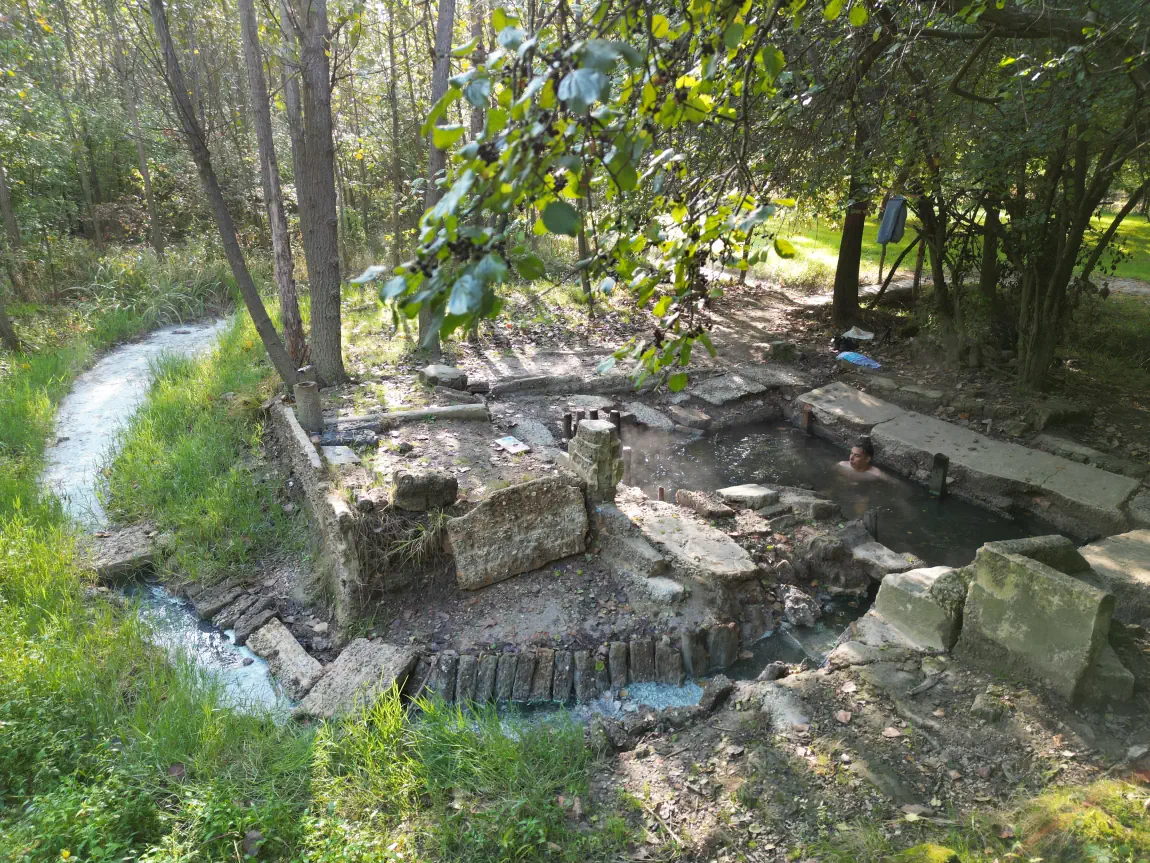
Drilling on the opposite bank of the Adour in the 1930s significantly impacted the native temperature of the spring. At that time, the temperature was 38°C. But the artificial heating of the water (a process now widely used for thermal waters) has made up for this lack of heat for the spa facilities.
The spring then became the regular resource for the two-storey, 15-room hotel built next door, which also had a kitchen and refectory.
The commune purchased the site after operations ceased there in 1964. Due to its proximity to the River Adour, the spring flooded frequently, which occasionally damaged the facilities. The site was demolished in the 1970s.
A natural, living medium
The Trou de Madame site is not located in the deepest part of the forest. Nevertheless, it has a fairly wild appearance, with a variety of trees growing around the spring.
Then, you can take your time to observe (and listen to) the surrounding nature, or marvel at the thermal water bubbling up from the vertical tube. This is the result of a borehole that was drilled to a depth of ten metres in 1933. This followed the drilling of boreholes on the opposite bank of the Adour.
The release of carbon dioxide into the water creates a spectacular display of sights and sounds. Furthermore, this gas has beneficial properties when dissolved in bathwater. For more information, read the article ‘The amazing health benefits of a hot bath‘.
This channel is home to several dozen species of microscopic algae, most of which are unique to this mineral- and sulphide-rich micro-biotope.
In particular, you can see clusters of a flaky, whitish material that indicates the presence of a specific type of algae known as ‘sulfuraire’ or ‘glairine’. These algae thrive in sulphurous waters.
Unique sulphide muds
Exceptional-quality sulphide muds that are rich in metabolites and have resulted from long maturation can also be found in the surrounding channels, where the land has retained its original appearance.
This thermal mud is formed by micro-organisms that take advantage of the clay soil created by the Adour River and the sulphurous thermal water. However, when the spring was just a simple hole of muddy water (photo taken in 1892), the thermal mud produced was of a much higher quality.
The Préchacq-les-Bains thermal baths also cultivate their own mud, known as sulphated mud, which visitors can see in the thermal park.
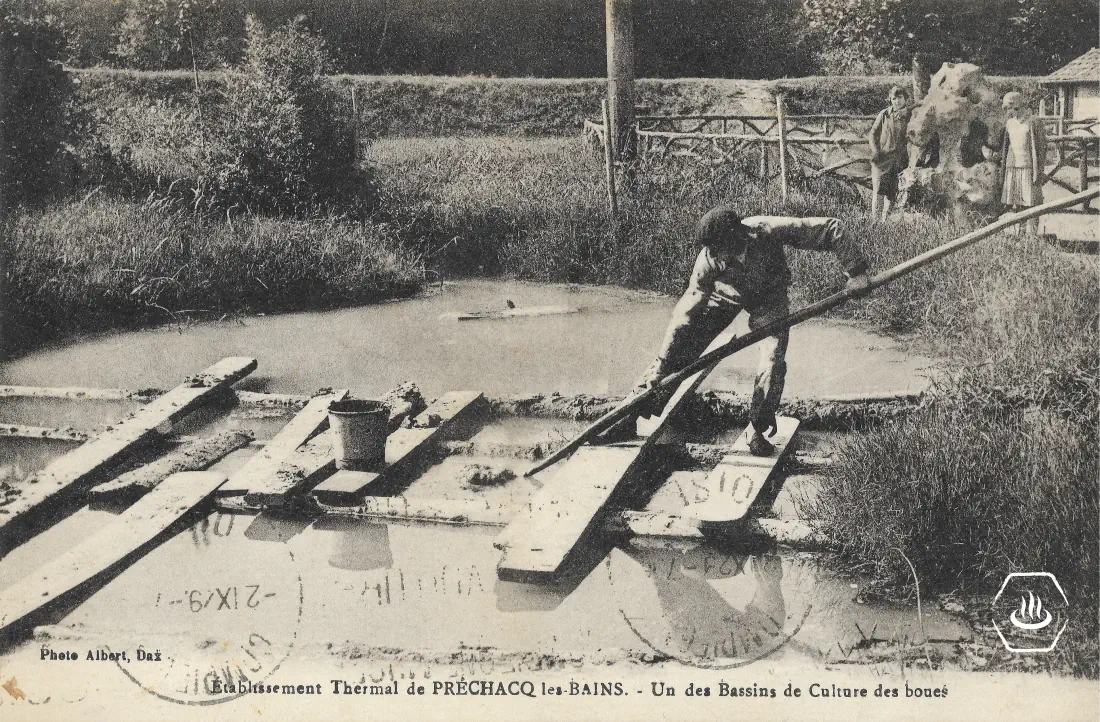
The nature of water and its therapeutic properties
There are five springs in the Parc des Thermes, four of which are hot calcic sulphate waters at temperatures ranging from 46 to 60°C, and one of which is a cold calcic sulphur water at 18°C.
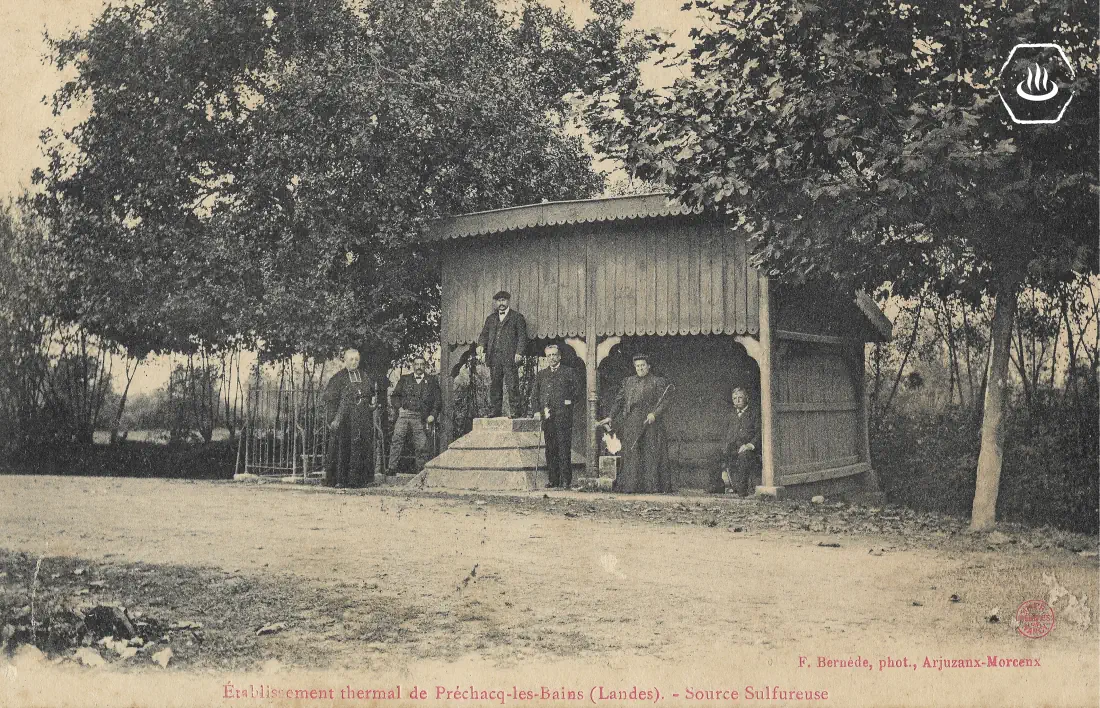
The Trou de Madame spring, also known as the Dumartin or Sesca spring, is located separately from the others. It stands out due to its sodium chloride-sulphur nature, with a temperature of 30 degrees and a mineral content of 2,100 mg/l.
It is the only sulphurous hot spring in Préchacq-les-Bains that is hot enough for natural soaking. It just needs a few extra degrees to attract more visitors.
Finally, the proportion of dissolved sulphurous matter is very high. Moreover, the smell of rotten eggs (H₂S) that emanates from it is tenacious.
It is therefore a real effective treatment (although less so than its original effectiveness) for rheumatism and skin diseases (eczema, psoriasis, etc.).
Hydrogen sulphide is also an effective treatment for respiratory tract diseases. You can find out more in the article ‘How to cleanse your lungs with simple, natural ways‘.


